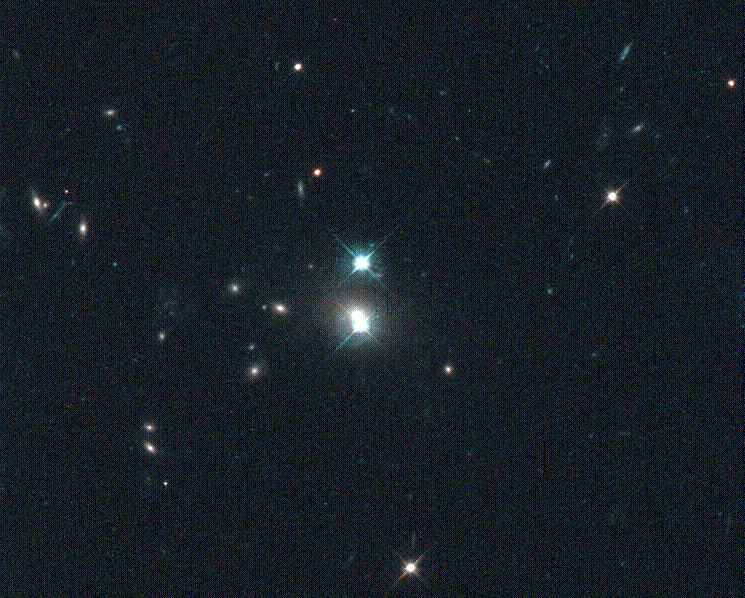
Gravitational lensing was long predicted by Einstein's General Theory of Relativity - if gravity can be properly viewed as a bending of space produced by mass, then light rays should change their direction upon passing a massive object. In extreme cases, we might expect to see multiple images of the same object, formed by light that has gone around opposite sides of the intervening mass. The first examples of such lensing involved quasars, as the brightest objects seen at large distances. This is the first confirmed lensing case, the double quasar 0957+561. It was found while searching for counterparts of radio sources, when two candidates showed up only 6 arcseconds apart. In a 1979 paper, Dennis Walsh, Bob Carswell,and Ray Weymann showed both to be quasars with identical redshifts and spectra, which led them to speculate that this might be a gravitational lens. Shortly thereafter, observations from Mauna Kea and Palomar showed a luminous galaxy almost in front of one quasar image, and a surrounding cluster that could also contribute to the lensing.
This system has given us more to work with, in analyzing its properties and the mass of the lensing galaxies, than any other lensed QSO. Radio sources give the parity; lensing radius, and shear of the mass distribution, we probably have the time delay for light along the two distinct paths, and may even see microlensing effects from stars in the central galaxy. These can in principle lead to a measurement of the Hubble constant and the characteristic masses of stars and substellar objects in this very distant lens galaxy.
This composite comes from a combination of 3 images each in V and I filters, showing the field of view of a single WFPC2 wide-field CCD centered on the QSO images (PI was George Rhee). Each individual image had an exposure time of 2300 seconds, and they were made into a color image using a synthetic intermediate color. This filter choice means that the galaxy colors in the foreground lensing cluster are as we would see them at the cluster (that is, implicitly correcting for the passband shifting from the cluster's redshift). These exposures were long enough to saturate the bright QSO images, so some bleeding of charge in the images appears. Also, the outer halo of blue light from the inner QSO image affects the lens galaxy's appearance in the blue.